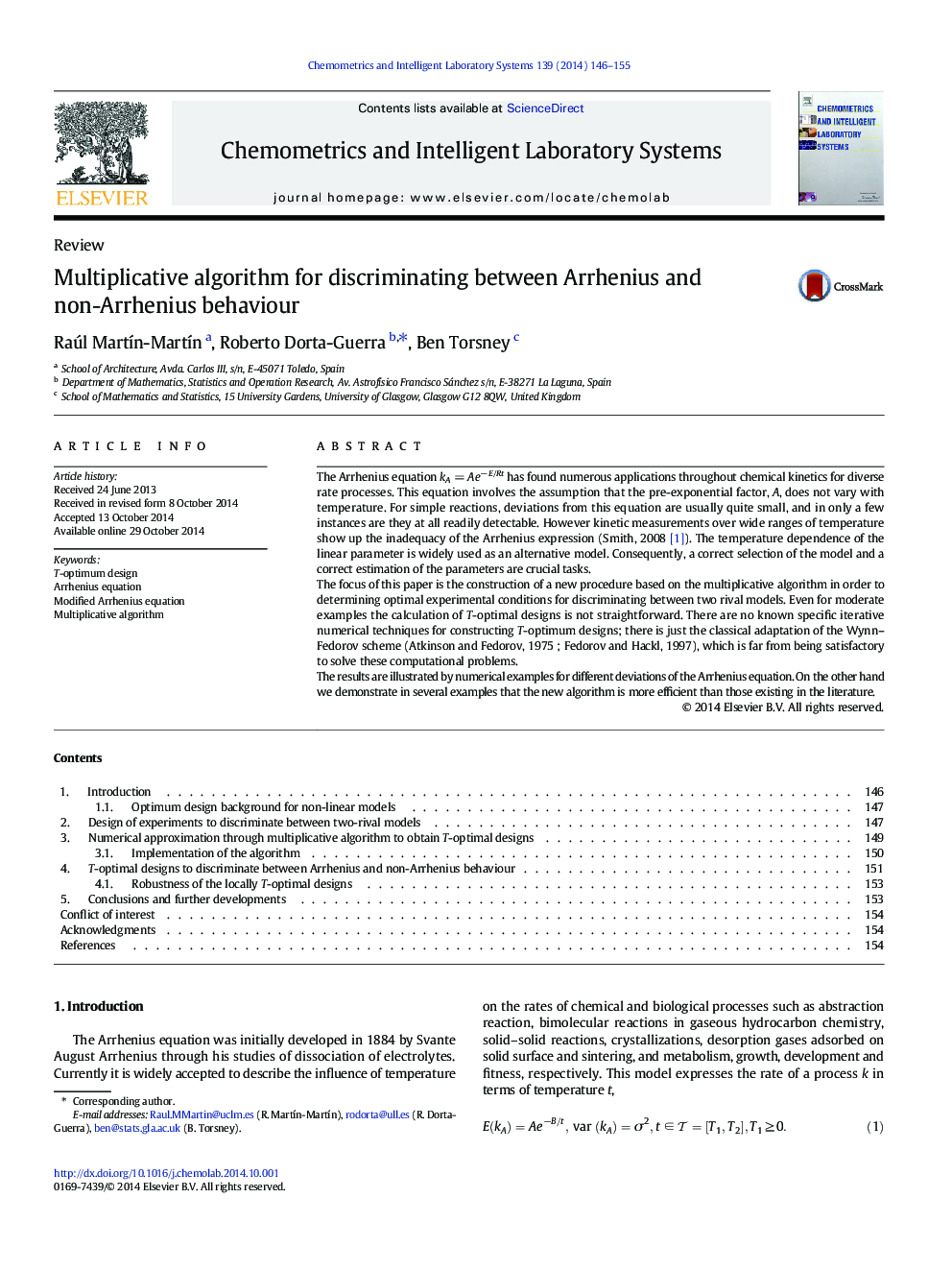| کد مقاله | کد نشریه | سال انتشار | مقاله انگلیسی | نسخه تمام متن |
|---|---|---|---|---|
| 1180653 | 1491539 | 2014 | 10 صفحه PDF | دانلود رایگان |

• T-optimum designs to discriminate between the Arrhenius and modified-Arrhenius equations are obtained.
• An efficient numerical method to construct a good design to discriminate between models is provided.
• The new procedure is based on the multiplicative algorithm.
• For the new algorithm, the total amount of space required is invariant on each step.
• Through different examples, the fast convergence of the new procedure has been proven.
The Arrhenius equation kA = Ae− E/Rt has found numerous applications throughout chemical kinetics for diverse rate processes. This equation involves the assumption that the pre-exponential factor, A, does not vary with temperature. For simple reactions, deviations from this equation are usually quite small, and in only a few instances are they at all readily detectable. However kinetic measurements over wide ranges of temperature show up the inadequacy of the Arrhenius expression (Smith, 2008 [1]). The temperature dependence of the linear parameter is widely used as an alternative model. Consequently, a correct selection of the model and a correct estimation of the parameters are crucial tasks.The focus of this paper is the construction of a new procedure based on the multiplicative algorithm in order to determining optimal experimental conditions for discriminating between two rival models. Even for moderate examples the calculation of T-optimal designs is not straightforward. There are no known specific iterative numerical techniques for constructing T-optimum designs; there is just the classical adaptation of the Wynn–Fedorov scheme (Atkinson and Fedorov, 1975 ; Fedorov and Hackl, 1997), which is far from being satisfactory to solve these computational problems.The results are illustrated by numerical examples for different deviations of the Arrhenius equation. On the other hand we demonstrate in several examples that the new algorithm is more efficient than those existing in the literature.
Journal: Chemometrics and Intelligent Laboratory Systems - Volume 139, 15 December 2014, Pages 146–155